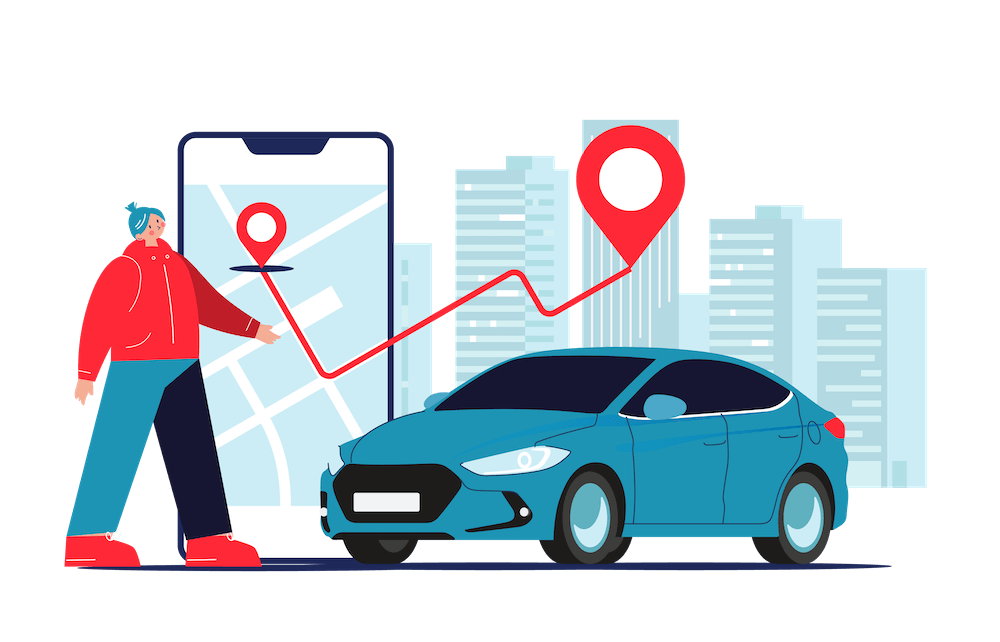
Monitoring vs. Observability? Let’s think about driving cars
From Maps to Apps: Our cloud engineer Marcus Eder explains why the future is with observability in IT systems.
Observability is a must in a modern microservice cloud-based system. But why? We have loads of experience with monitoring our services. Why change? And what’s the difference between monitoring and observability?
I won't bore you with dry definitions and abstract examples. Instead, I want to take you for a ride in your car. A ride: some time in the past; today and some time in the future. It’s an analogy that makes the differences clear.
Here’s an example.
We want to travel by car to a certain destination. We need to plan a route and set off. We check information about our car and about possible traffic jams to make decisions for safe and efficient travel.
What we did in the past.
We take a map and figure out the destination. With the help of the scale on the map, we estimate a distance to it. It should be about 500km - at least point-to-point. It’s quite hard to say, since the streets are not as straight as the scale.
We hop in the car and start moving. As we drive, we repeatedly check the dashboard of our car for speed, time and most importantly fuel. We follow the radio broadcast to find out about a possible traffic jam. And there is one somewhere on our route ahead.
Oh, and now there’s even this red light flashing, telling us that our fuel reserves are low. Now we as the driver have to make decisions, taking all the information from the different sources. Will we make it to our destination without refueling? Should we leave our route to bypass the jam? What’s the best alternative route?
What we do today.
We sit in the car and enter the destination into our navigation system. 487km to the destination on the shortest route. We start to drive. A quick look onto our dashboard tells us, we can only make about 320 km with our current fuel level. There’s no second guess - we’ll have to refuel somewhere along the way. Maybe we’ll find a convenient fuel station en route. If not, our GPS will find one for us.
As we continue to drive, we hear a beep from the GPS unit. There’s a traffic jam ahead and it suggests we follow the alternative route to save about 15 minutes. Now it’s our to decide what route to follow.
What we’ll do in the future
We open our mobile device and enter the route we want to take with our car. The app checks the best possible routes. It takes into consideration where and at what time there are usually traffic jams. It checks the status of our car. Are the parameters of our car normal, or are problems to be expected? It realises that there’s not enough fuel.
The app gathers additional information. It checks fuel prices at the different fuel stations along our route and identifies an area where it is the cheapest. So even when prices change during the day, we can be confident we’ll save some cash.
The route will be about 507km. The parallel highway has less traffic and is pretty straight. We reach our destination with less fuel consumption and it took less time, compared to our trips in the past.
With this in mind, what is monitoring?
Monitoring in its essence is taking measurements, displaying them on dashboards and having alarms at known thresholds - like the fuel gauge or the radio in the car. As an operator, it’s our job to gather the information from the various tools, aggregate them in our mind and make decisions.
Experience is our best friend. We’ve seen the indications many times and know where the issue lies. An operator without experience might end up “in the traffic jam without fuel”.
Observability
Observability tries to put data in context and helps us to understand the consequences. “With this fuel level, you can go another … km”. Data is aggregated in the observability tool, not in the mind of the operator.
Even a rather basic setup will increase your understanding of your IT system. But the more complex it is, the bigger the need for observability.
And the more data you feed into it, the better will be the benefit. Observability platforms work hard on expanding their capabilities of analysing that data. Machine learning and AI help you to understand patterns and outliers. Time to resolve issues is drastically reduced.
What's the difference?
So what’s the difference between monitoring and observability? Monitoring is purely reactive. It means to wait until something happens. When the stress level is the highest, you need to react.
Observability on the other hand, adds the ability to proactively do something, or understand what’s going to happen if you don’t.
So, what “car” are you driving in your systems? The good and beloved old-timer? Or do you benefit from the features of modern observability overdrive? Oh, and if you or your team need a little help getting your head around these tech things, reach out to us using the form below. We'd love to help.
Get in Touch.
Let’s discuss how we can help with your cloud journey. Our experts are standing by to talk about your migration, modernisation, development and skills challenges.




